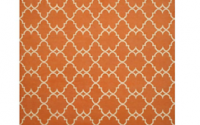Leather and leather tanning methods
Our ancestors consume leather to protect themselves from the cons of tents. They use animals to eat by hunting modernized clothing, footwear, and crude tents from the hide. This is the most useful discovery by the ancestor. Now it is modernized according to the technology it was designed and decorated with tanning formulas. This tanning formula edited y ancient Greeks by using certain tree barks and preserve the leathery leaves soaked in water to preserve. Later Roman made developed use of leather for footwear, clothes ad military equipment including shields, saddles, and harnesses. Best place for leather craft workshop singapore there we can get the best experience to enhance our knowledge about leather craft it makes to enrich our skill on the leathercraft. With the help of leathercraft development and needs of leather are increase and everyone likes to use them based on their wishes and variety also chooses by themselves at the leather shop.

Method for tanning method.
In the tanning liquor which chemicals are used based on that tanning process also largely differ. They may use some common types are
- Vegetable-tanned leather
- Chrome tanned leather
- Brain tanned leather
- Alum leather
These are the common tanning method. Bark mills are prepared by tree bark. Vegetable matter is extracted by the tanning method and it is the oldest method and it provides brown color, the color of the skin. Vegetable skin color is not stable in water its covert into discolor. Drastically and pliable by a shrink. Become rigid and eventually brittle and boiled leather. It was sporadically used as a shell after hardening, and it also can be converted as bookbinding for the vegetable-tanned leather. Chromium sulfate is using for tanned and other chromium salts that were invented in 1858 by chrome tanned leather. It is also considered as wet-blue for the pale blue color of the under the leather. This is vegetable tanned, it does not lose color or shape as drastically in vegetable-tanned leather. A wet white pale color using glutaraldehyde or oxazolidine compounds by the aldehyde tanned leather and it has main type chrome-free leather, usually seen in shoes for infant and automobile. Due to dangerous insensitive for the worker formaldehyde was ignored to use in present but in the past they use formaldehyde. Emulsified oils that use in a labor-intensive process are made by Brain tanned leather. Deer, cattle, and buffalo are often used those animals brain for their soft and wait are exceptional in the Brain tanned leather. With aluminum salts assorted with a variety of folders and proteins are used to transfer for alum leather. They are flour and egg yolk. And the alum leather tanned in the process as taking rather.
Enzyme role in leather
Proteases lipases and amylases are the enzymes they have an important role in the soaking, repairing, and beating operating leather and manufacturing. Most commonly used in enzymes are proteases in leather production. Collagen or keratin can’t be dissolved in the enzyme or damage the enzyme. Some of the other materials like hydrolyzed casein, elastin, albumin globium like protein and none structure protein that are not essential to tanning the leather or for leather making.


